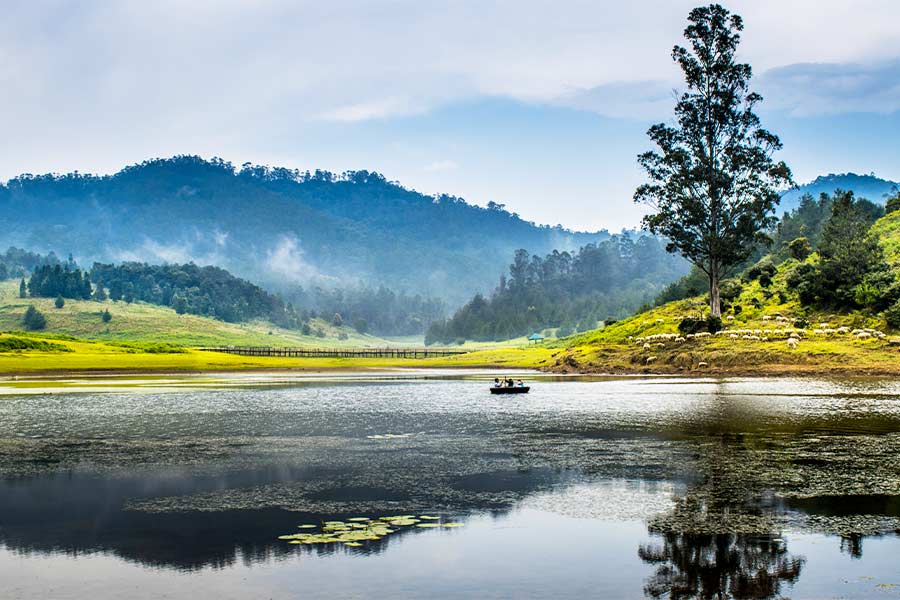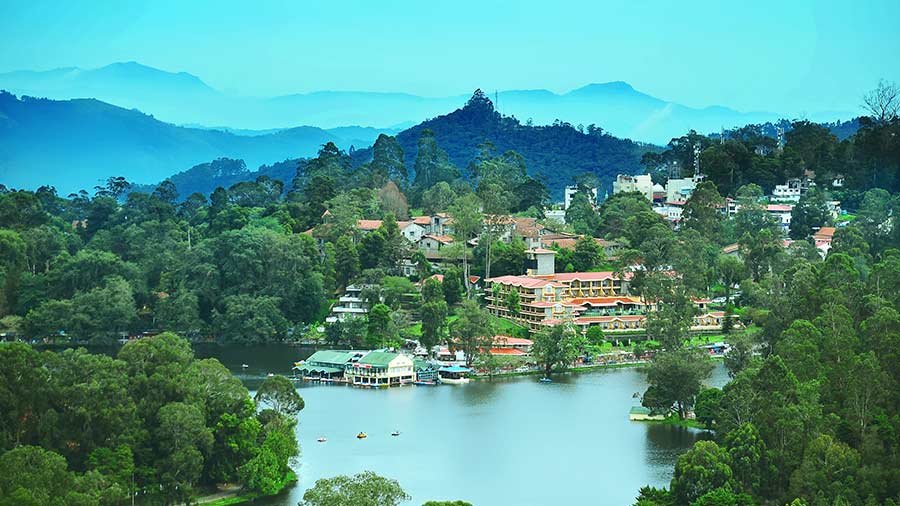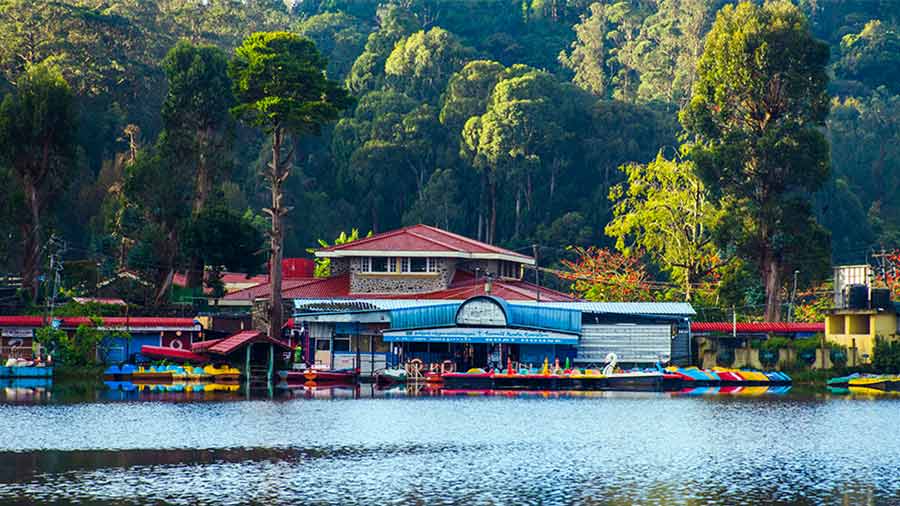The early bird catches the worm. In Kodaikanal, the early riser catches (glimpses or images) of the birds. Ravi, my guide for the morning, ensured that we set out of my resort soon after sunrise to spot some of the 150 species of birds that have made Kodaikanal home. Thirty of these birds are endemic to the Western Ghats. One of the highlights of my morning trail was catching a glimpse of the Palani Laughing Thrush that’s endemic to this region. My walk down Lower Lake Road was supposed to be a nature walk but ended up being a walk back in time through nearly two centuries of Kodaikanal as we know it.
From Baynes Bungalow to The Tamara Kodai
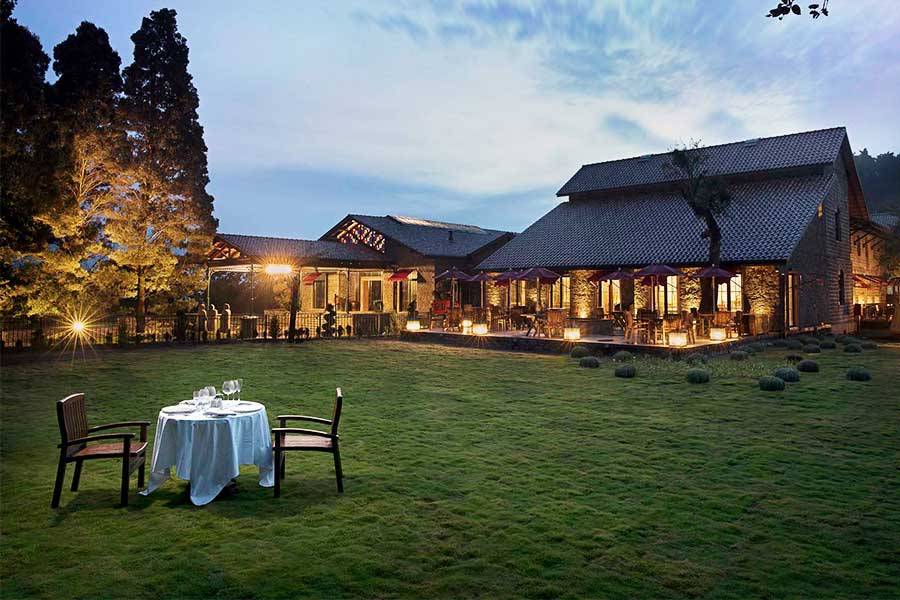
The Tamara is a cluster of 53 suites spread over 7.5 acres
My journey started at the Tamara Kodai, one of Kodaikanal’s most luxurious resorts. It wasn’t always a lap of luxury though. You will see a stunning installation of three cowled monk statues as you drive into the resort. This installation makes a connection with the resort’s past. It was first Baynes Bungalow, that dates back to the 1840s, a charming bungalow built by the Kodaikanal District Judge at that time. Baynes sold the bungalow to Father Louis Cyr, a well-known missionary in the town. It was renovated and rechristened La Providence. It served the sick priests of Nagapattinam as a rest house.
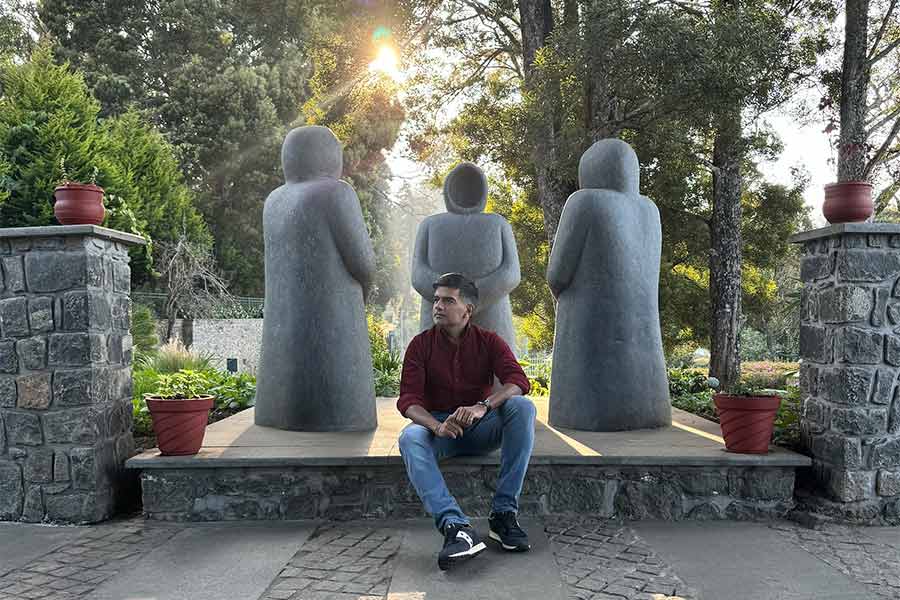
The author poses by the stunning installation of three cowled monk statues
La Providence is now the all-day diner at the Tamara Kodai where you can sample local delicacies and international signatures. The Tamara is a cluster of 53 suites spread over 7.5 acres that also includes one of the only (temperature-controlled) swimming pools in Kodaikanal. The transformation from a monastery to luxury resort replete with stained glass windows took nearly a decade, the resort has been operational since 2018 and offers beautiful views of Kodai.
Missionary zeal
The earliest references to the Palani Hills region and the Kodaikanal go back to the Tamil Sangam literature era. This area was called Kurinji, after the flower unique to this region that blooms every 12 years. BS Ward – a British lieutenant, first surveyed the area in 1821. His reports about the beautiful hills and pleasant weather attracted American and European missionaries and the British began settling here. Ravi pointed out to Shelton Cottage as we walked down towards the Kodai lake. It’s the oldest surviving missionary house in Kodaikanal that dates back to 1845. Six missionary families made Kodaikanal home in 1845. We walk past the cemetery that was once the site of the first church in the area. Ravi quotes an article from Kodai Chronicle that details how this church was made out of flattened biscuit tins. The church was demolished in the 1890s. By this time two other churches were constructed in Kodaikanal.
Church trail
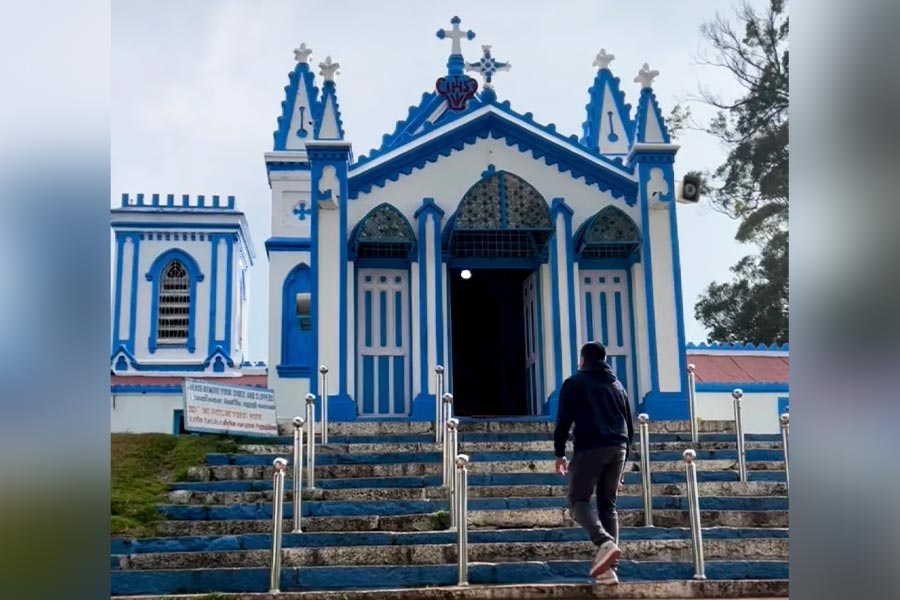
La Saleth, the oldest Catholic church in Kodaikanal
There are only two churches in the world that are dedicated to the Lady of La Saleth – an apparition of Virgin Mary, one of them is in Kodaikanal (the other one is in France). I walked from Tamara to La Saleth, the oldest Catholic church in Kodaikanal. A fine example of French-Tamil architecture with splashes of blue, the La Saleth Church was dedicated on Easter Sunday in 1866. The most visible historic church – owing to its location next to the popular viewpoint Coakers Walk (that was developed in 1872) is Christ the King Church.
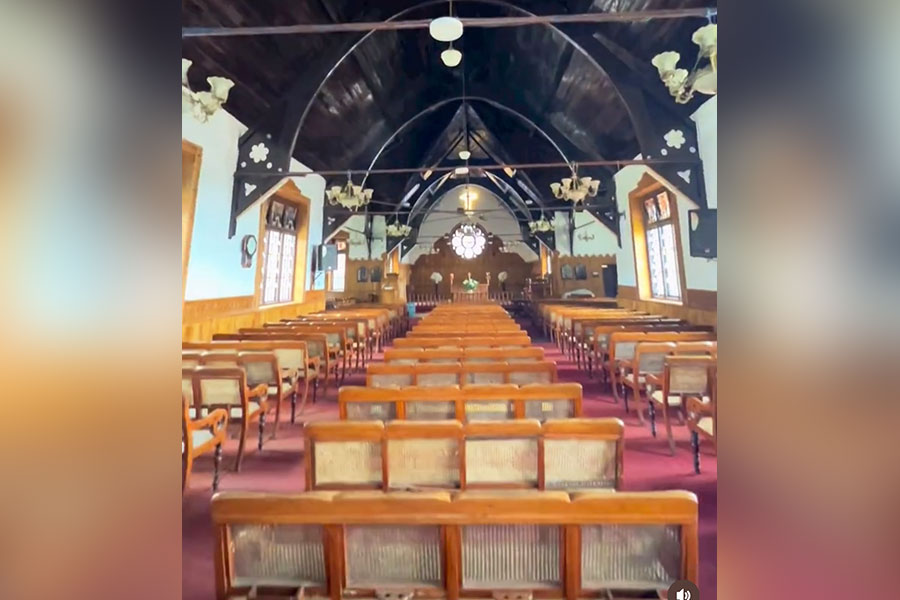
Inside Christ the King Church
Built by the American Madurai Mission in 1895, this colonial-era church features Gothic design elements with impressive stained-glass columns. And then there’s a church that is tucked away in a tiny hillock away from tourist hotspots. The TELC Jubilee Church dates back to 1906 and is still called the German church. This was built by German and Swedish settlers. The church is home to a wooden bell tower that arrived from Germany a century ago.
An example of conservation

Kodaikanal Lake is a manmade waterbody
It’s impossible to imagine that the Kodaikanal Lake was a manmade lake. My walk ends at the lake from where I drive up for my favourite views of the Kodai Lake from Upper Lake Road. This is the quieter side of the lake that was developed in the 1860s. It’s now the very heart of Kodai. I’d recommend getting there early and cycling or walking around the 5km road to catch the legendary Kodai mist. The lake was contaminated by the 2000s but has benefitted from national and state government driven restoration efforts as well as campaigns to prevent litter.
Kodaikanal is full of fascinating tales that go back to the time when the British sought refuge from the sweltering heat in the plains and European and American missionaries started moving here in the 19th century. I’ve been to Kodaikanal numerous times and almost each time I come back, there’s a new tale waiting to be discovered.


